Fujifilm X-Q2 Review
Fujifilm X-Q2 Introduction
The Fuji XQ2 is a premium digital camera in a compact body featuring Fuji's unique X-Trans CMOS II sensor with built-in Phase-Detect AF. Packed with features including full manual-controls, manual-focus and custom white-balance, the XQ2 makes these more accessible than any compact camera with dual control-dials and a traditional exposure mode-dial.
Its ultra-wide-angle 4X optical zoom lens has an ultra-bright F/1.8 maximum aperture which dims to F/4.9 at the telephoto end. This retractable lens offers an equivalent 25-100mm focal-range and optical image-stabilization.
The 12 megapixels sensor of the Fuji XQ2 has an ISO range of 100 to 12800 at full-resolution. Its X-Trans 6x6 color-filter-array resolves details without suffering from moire artifacts and therefore does not use an anti-alias filter like nearly every other fixed-lens camera.
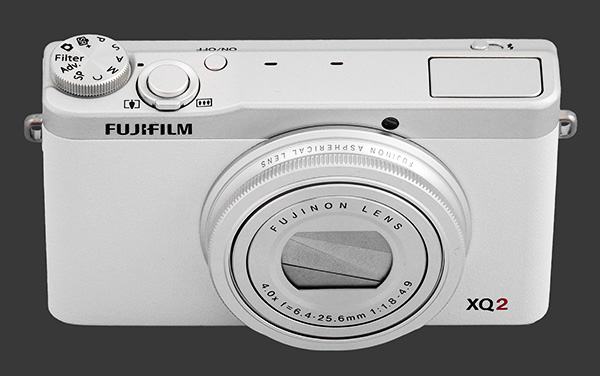
This camera review covers the usability and performance of the Fuji XQ2.
Fuji XQ2 Features
Sensor
- 12 Megapixels 2/3" X-Trans CMOS II Sensor
- No Anti-Alias filter
- 49-Point Hybrid Phase-Detect AF
- ISO 100-12800 with 100% Dynamic-Range
- ISO 200-3200 with 200% Dynamic-Range
- ISO 400-3200 with 400% Dynamic-Range
- Automatic ISO up to 400-3200
- JPEG, RAW or JPEG+RAW Output
- 1920x1080 @ 60 FPS 16:9 HD Video
- 640x480 @ 80 FPS 4:3 SD Video
- 320x240 @ 150 FPS High-Speed Video
- 320x112 @ 250 FPS High-Speed Video
Lens
- Fujinon 25 - 100mm equivalent lens
- Bright F/1.8 - 4.9 maximum aperture
- F/1.8 - 11 Aperture range, 1/3 EV stops
- Optical Image Stabilization
- 3cm Minimum focus distance at 25mm
- 50cm Minimum focus distance at 100mm
Exposure
- PASM Exposure modes
- 1/4000s - 30s Shutter-speed
- Exposure-Compensation, ±3 EV, 1/3 EV steps
- Flash-Compensation, -2/3...+2/3, 1/3 EV steps
- Multi-Segment, Spot & Average metering
- AEB, 3 Frames, ±1 EV, 1/3 steps
- ISO Bracketing, ±1 EV, 1/3 steps
- Film Simulation Bracketing
- Dynamic Range Bracketing
- Fixed 1/3 EV exposure steps
Viewfinder & Displays
- 3" LCD, 920K Pixels, 100% coverage
- Digital-Level, Tilt axis only
Focus & Drive
- Auto or Single or Tracking focus-point selection
- Single-Shot, Continuous or Manual Focus
- 12 FPS Drive, Max 8 JPEG
- Motion Panorama, 360°, 180° & 120°
- Multiple-Exposure, 2 frames
- Multi-Frame Noise-Reduction
- Multi-Frame Background Blur simulation
- 2s & 10s Self-Timers
- Optional AF-Assist lamp
- Optional Face-Detect AF
- Optional Focus-Peaking
Images Parameters
- Automatic, Preset, Kelvin and Custom WB
- WB fine-tuning, 19-steps along 2-axis
- Film Simulation: Provia, Velvia, Astia, Classic Chrome, B&W
- Adjustable color-saturation, 5 steps
- Adjustable sharpness, 5 steps
- Adjustable highlight-tone, 5 steps
- Adjustable shadow-tone, 5 steps
- Adjustable noise-reduction, 5 steps
Body & Construction
- Dual Control-Dials
- Customizable E-Fn button
- Video-Record button, no dedicated mode
- Built-in flash, 7.4m (W) - 2.7m (T) reach
- Metal tripod mount
- Built-in WiFi, 802.11b/g/n
- 1080i HDMI output
- USB 2.0 connectivity
- SDXC memory-card slot
- Proprietary Lithium-Ion battery
- Internal USB charging
The Fuji XQ2 is completely identical externally to its predecessor. Read the detailed review of the Fuji XQ1 here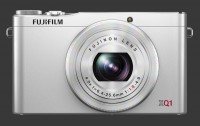
Fujifilm XQ1 to know about its usability and features. The only new feature is Classic Chrome film simulation.
Fujifilm X-Q2 Performance - How well does it take pictures?
Choosing a digital camera is all about results: Getting the image quality you need and photographs the way you like them. Compact digital cameras generally have it tough because they suffer from small sensors and limited controls. The Fuji XQ2 is made to address these two concerns while maintaining the size of a compact camera.
The Fuji XQ2 uses a 2/3" X-Trans CMOS II sensor which is slightly larger than most premium compact digital cameras. This sensor forgoes the usual anti-alias filter and is not prone to moire thanks to Fuji's exclusive 6x6 color-grid-array. It is also equipped with built-in Phase-Detect AF to provide quick autofocus without back-and-forth movement needed by Contrast-Detect AF.
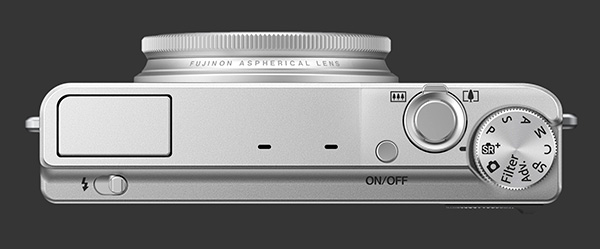
With the exception of a handful of cameras, ones with larger sensors are considerably bigger. This gives the XQ2 an edge in low light which is stretched further because of its ultra-bright F/1.8 lens. The lens quickly dims to F/2.8 at 35mm, F/4 at 50mm and F/4.9 from 62mm onwards.
Image noise is absent from images at ISO 100 and at ISO 200 which we suspect is the native sensitivity of the XQ2. Noise increases slowly and stays unobtrusive until ISO 1600, making 12" x 9" prints clean and crisp. ISO 3200 gets a noticeable jump in noise and the XQ2 starts to ignore the Shadow Tone parameter from then on. This results in noisy-but-usable mid-size prints. Image quality suffers at ISO 6400 which can make noisy-but-usable 4" x 6" prints. Notice this is a full-stop improvement over the XF1 for image-noise.
Noise reduction is reasonable and gradual. There are 5 levels to choose from and we recommend choosing -1 to avoid excessive softness. The XQ2 manages to preserve details even at relatively slow shutter-speeds. The Lens Modulation Optimizer also ensures proper sharpening to minimize the appearance of diffraction.
Sharpness from this digital camera is unusually good for a camera this small, at least when not limited by the lens. Default sharpness is adequate but the +1 setting is notably better and free of artifacts. The lens, however, exhibits strong edge softness, particularly at bright apertures. It must be stopped down to F/5.6 to get some reasonable sharpness across the frame. Maximum sharpness is achieved at F/7.1 just before diffraction takes effect.
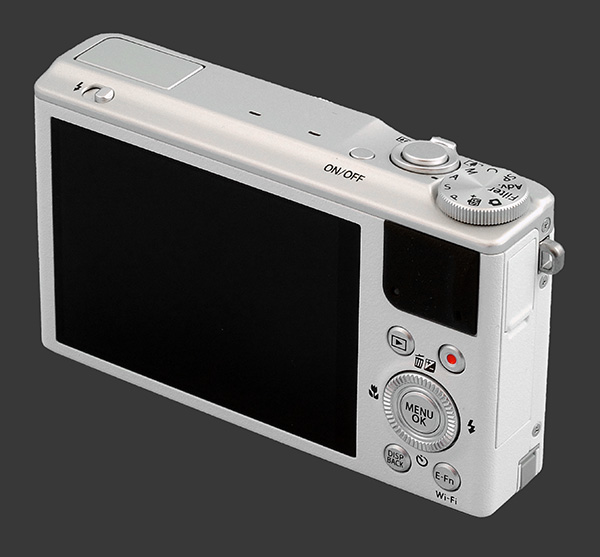
Colors of the Fuji XQ2 are good but despite numerous Film Simulation Modes and parameters, they never get very accurate. Provia gives the best results with Color at -1. Contrast appears natural at the default. It can be fine-tuned independently for highlights and shadows, which is quite useful. The new Classic Chrome mode is nice. It produces realistic colors with a slight undersaturation.
Automatic white-balance is good and much improved over its predecessor. Under some conditions, it still leaves a strong yellow cast but most images come out well-balanced. Presets can easily correct issues and Custom WB works perfectly.
Metering of the Fuji XQ2 is incredibly reliable. This camera requires less exposure-compensation than most cameras and manages to produce bright images without clipping major highlights. This produces more print-ready images but small highlights get occasionally clipped.
The dynamic-range of this digital camera is good for its sensor-size. At 200%, which is available at ISO 200+, captures more dynamic-range than most fixed lens cameras. At 400%, available at ISO 400+, the XQ2 does even better yet it does not match the dynamic-range of the XF1.
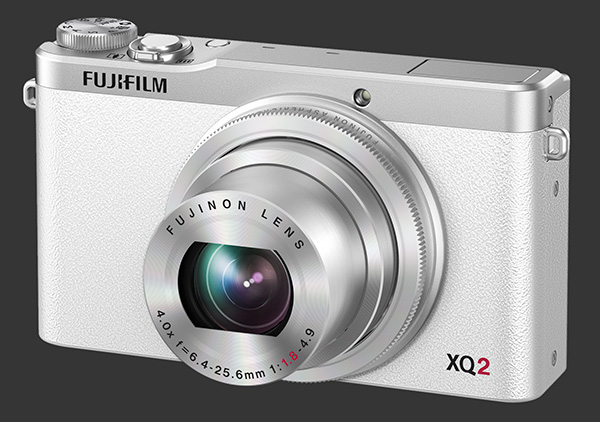
While optical distortion is high, the camera's EXR II processing engine removes most of it. A slight amount of barrel distortion is left towards wide-angle which almost disappears towards telephoto. Purple fringing is rare with it also being taken care of by image-processing.
The Fuji XQ2 features the latest X-Trans CMOS II sensor, first seen in 2/3" size on the Fuji X20 reviewed here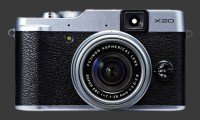
Fujifilm X20. This high-speed image-sensor offers full-resolution capture at up to 12 FPS. This speed is available for JPEG images only with a buffer-depth of 11 frames. 9 FPS shooting is available for RAW with up to 8 files. 6 FPS can capture up to 15 images, while 3 FPS gets up to 200 in a single burst.
Speed of the XQ2 is exemplary for the most part. It is quite responsive. The only time it holds back the photographer when entering Playback mode while saving files to memory. Its performance is characterized by the following measurements:
- Power On: 1¼s. Very good.
- Zoom: 2½s from wide to tele, or vice-versa. Average for a short zoom.
- Autofocus: Under ¼s in good light to 1s in low light towards telephoto end. Usually below ½s. Excellent.
- Image Shutter-Lag: Instant. Excellent.
- Video Shutter-Lag: 1s. Slow.
- Black Out: About ¼s. Excellent.
- Shot-to-Shot speed: Just over 1s. Average.
- Time-to-first shot: 2s. Good. Caution, the XQ2 does not wait for AF to lock.
- Playback: Around ½s to enter or exit. Good, except when saving which can take much long.
- Power Off: 1¼s. Good.
The Fuji XQ2 has a very fast shutter-lag and autofocus system. It slows down in low-light but remains faster than most fixed-lens cameras. Video shooters will be disappointed by the slow 1s it takes to start recording video, plus you cannot even see what you are framing ahead of time.
Battery-life of the XQ2 is quite short at 240 shots-per-charge, according to the CIPA measurement standard. Not using the built-in flash helps a little but a second battery is highly recommended to make it through long days of shooting.
Fujifilm X-Q2 Conclusion
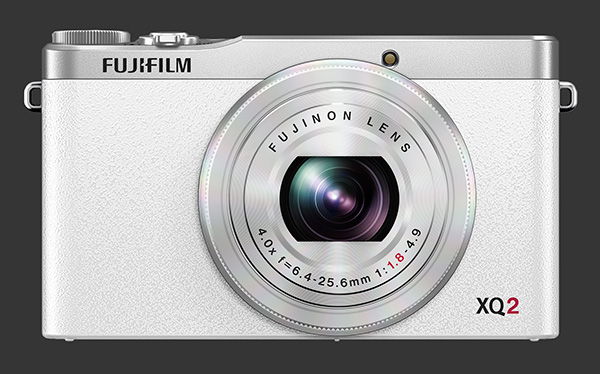
The Fuji XQ2 packs an excellent 12 megapixels X-Trans CMOS II sensor in a conventional premium compact digital camera design. Its dual control-dials, traditional mode-dial and complete manual-controls, make it one capable yet pocketable camera. The ultra-bright F/1.8 paired with on-sensor Phase-Detect AF gives it a speedy performance that very few fixed-lens camera can match.
Image-quality is very good for such a small camera. Noise-levels and rendition of details are close to the best in its class. The ultra-wide lens offers good sharpness towards the center of the frame with noticeable softness all along the edges. Image processing though handles distortion, fringing and vignetting well though.
The most impressive aspect of the XQ2 is its speed. Other than a long lag starting video capture, this camera performs most operations quickly. The autofocus system is top-notch and typically locks just under ½s in low-light and twice as fast in good light. Shot-to-shot speeds are also quite impressive for a fixed-lens camera.
Framing with the XQ2 is done via a large 3" LCD with excellent visibility. The preview is not entirely accurate yet sharp and fluid. An option to make the display Exposure-Priority is available but only for Manual mode. Sunlight mode brightens up the display to the point of clipping highlights but maintains a visible image in the brightest light.
The bottom line is that the Fuji XQ2 delivers an overall performance that few truly compact cameras can match. The larger X20
Fujifilm X20 offers even more impressive results with a brighter mechanical zoom lens which is a pleasure to use.
 |
Please Support Neocamera
All information on Neocamera is provided free of charge yet running this website is a huge endeavor. Purchases made via affiliate links found throughout the site help keep it running and up-to-date. There is no additional cost to you, so please consider buying via these links to our affilates:
If you found any information on this site valuable and did not purchase via our affiliate links, please considering donating via PayPal:
Any amount will be greatly appreaciated. Thank you for your support!
Fujifilm X-Q2 Highlights

Sensor-Size: 9 x 7mm

Actual size when viewed at 100 DPI
| 12 Megapixels Fixed Lens | ISO 100-12800 |
| 4X Ultra-Wide Optical Zoom | Shutter 1/4000-30s |
| Built-in Stabilization | Full manual controls, including Manual Focus |
| 1 Axis Digital Level | Custom white-balance |
| 12 FPS Drive, 9 Images | Spot-Metering |
| 1920x1080 @ 60 FPS Video Recording | Lithium-Ion Battery |
| 3" LCD 920K Pixels | Secure Digital Extended Capacity |
Updates
2025.01.18

Fujifilm GFX 2025 Lens Roundup
Lens Review roundup of Fujifilm GFX Medium-Format lenses. Quality, performance and handling of the GF20-35mm F/4R WR, GF30mm F/3.5 Tilt-Shift and the GF55mm F/1.7.
2024.11.18

Best 2024 Photography Gifts for Every Budget
Great gifts for photographers and photo enthusiasts selected for every budget among the best products of 2024.
2024.08.07

Eye Protection Tips for Professional Photographers
The four main considerations for professional photographers regarding eyewear.
2024.07.14

Fujifilm X100VI Review
Flagship fixed-lens compact digital camera with a 40 MP sensor and Image-Stabilization, a first for the series. Retro design featuring dual control-dials, plus direct ISO, Shutter-Speed and EC dials. Its hybrid viewfinder can switch between EVF and OVF mode.
2024.05.09

Fujifilm GFX100 II Review
Flagship 102 Megapixels Medium-Format Mirrorless Digital Camera with 8-Stop 5-Axis IBIS, 8 FPS Drive, 8K Video and 400 MP Super-Resolution capture in a weatherproof and freezeproof body with dual control-dials and dual memory-card slots.
2024.04.03

Fujifilm X-T5 Review
Newest Fujifilm flagship boasting a 40 MP APS-C sensor, 5-axis IBIS with 7-stop efficiency, 15 FPS continuous drive, 6.2K Video capture, dual control-dials and dual SDXC UHS-II slots in a sturdy weatherproof and freezeproof body.
2023.11.20

Best Digital Cameras of 2023
Find out which are the Best Digital Cameras of 2023. All the new Mirrorless Digital Cameras from entry-level to high-end professional.
2023.07.10

Fujifilm X-H2 Review
40 Megapixels APS-C Hybrid Mirrorless Digital Camera with 7-stop IBIS. Fastest shutter ever and 8K video capture. Large builtin EVF with 0.8X magnification and 5.8 MP, plus an Eye-Start Sensor. Packed with features and large number of controls in a weatherproof and freezeproof body.
2023.05.07

Sony FE 20-70mm F/4G Review
Review of the unique Sony FE 20-70mm F/4G lens. The optical zoom of this lens spans ultra-wide-angle and medium focal-length coverage, making it one of the most versatile Full-Frame lenses on the market.
2023.01.15

Huion Inspiroy Dial 2 Review
Review of the Huion Inspiroy Dial 2 tablet, a medium sized drawing surface with dual dials and customizable buttons. Connects via USB-C or Bluetooth 5.0 with Windows, Linux and Android support.
2022.12.08

How to Pack for a Photo Trip
Find out how to pack for a travel photography trip, carry your gear safely while meeting airline regulations.
2022.11.13

Best Digital Cameras of 2022
The best digital cameras of 2022. A short list of the most outstanding models in their respective categories. Choose one for yourself or as a gift.











